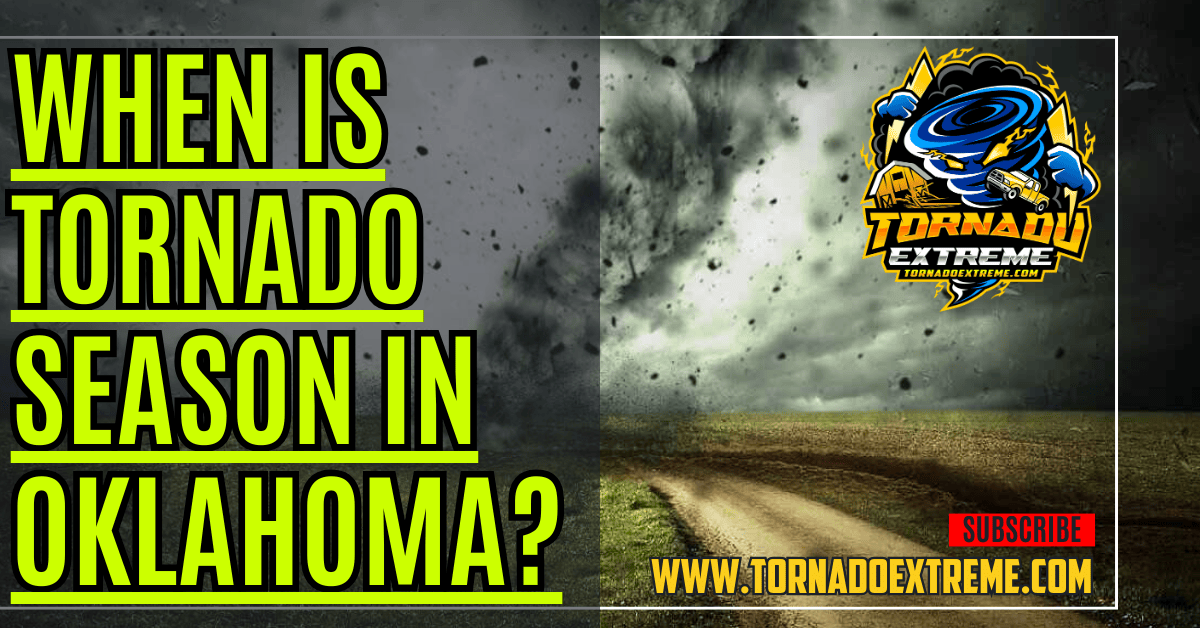Oklahoma residents have long been familiar with tornadoes – the state falls within “Tornado Alley” and experiences a high number of these destructive storms each year.
With spring comes tornado season, so it’s important for Oklahomans to be prepared for potential damage. This post will discuss how tornados form, examine what makes them unique to this region, and provide safety tips for surviving another stormy season.
Whether you’ve lived here your whole life or just moved to Tulsa or Norman, understanding tornado season in Oklahoma is key to keeping yourself and your loved ones safe. So let’s get ready for the next few months together — we’ll explain how these forces of nature work and how you can prepare.
The Science Behind Tornado Formation
One of Mother Nature’s most powerful demons, tornadoes are no strangers to Oklahoma. Knowing how they develop is the first step toward protecting yourself from their wrath once those sirens sound.
So why do twisters form? It all starts with instability in the atmosphere. Warm air near the surface has a natural tendency to rise when it meets colder air higher up. When they collide, the warmer air begins racing skyward at incredible speeds — updrafts as meteorologists call them — while cooler winds flow down toward the ground. According to the National Oceanic and Atmospheric Administration, these conditions are ripe for tornadoes to occur.
The clash of these opposing gusts creates chaos inside that thunderstorm cloud above your head and sets off its rotation. That swirling column of air is called a mesocyclone, which produces strong updrafts capable of spinning harder than your washing machine on laundry day.
As more warm air gets sucked into that rising vortex, any debris floating in it will start forming an ominous funnel cloud below, signaling the possible formation of an F5 tornado. But don’t worry — it’s not quite a full-blown tornado yet … until it touches down on Earth.

What Conditions Lead to Tornadoes in Oklahoma?
Tornadoes in Oklahoma can form when colliding air masses meet. When warm, moisture-rich air from the Gulf of Mexico meets dry, cool air from the Rockies — which frequently happens in Tulsa and Norman — conditions for severe weather are ripe and tornadoes may follow. Furthermore, Oklahoma’s position within Tornado Alley means that it often sees these three key ingredients come together.
The state’s flat topography allows air to flow freely and minimizes frictional forces that could disrupt budding storms. Seasonal variations also play a role. In spring and early summer, solar heating destabilizes the atmosphere and provides plenty of energy for thunderstorms capable of producing tornadoes to form. In fall and winter months, cold fronts moving from the north crash into lingering warm, humid air masses – a recipe for severe weather outbreaks across much of Iowa and Oklahoma County.
It is crucial to understand how atmospheric conditions interact with each other in order to know what causes tornadoes in this region. The National Oceanic Atmospheric Administration reported on some of these dynamics after the May 20, 2013 storm hit Moore.
A combination of geography and topography make tornado formation more likely in Oklahoma than other places. The state lies at a prime location within North America’s mid-latitude weather patterns, situated near both polar jet streams and subtropical jet streams. This puts it in an area where wind shears are strong enough to help intensify storms into supercells — those rotating thunderstorms responsible for most powerful tornadoes.
Much work remains to be done studying this historic outbreak as well as others before it “to better understand multimode hazardous events,” the authors write.
See also: Which State Has the Most Tornadoes and Why It Matters

Understanding tornadoes in Oklahoma
Tornadoes in Oklahoma You’ve seen them in movies – those destructive swirling twisters that can rip through buildings and take lives. And if you live in Oklahoma, you know just how real they are. The state is no stranger to the catastrophic storms, which form frequently during tornado season from April to June. With Tornado Alley as its stomping grounds, it’s no wonder Oklahoma sees so many of these dangerous weather events.
The equation for a tornado is simple: warm moist air from the Gulf of Mexico mixes with colder air coming down from the north and dry air traveling eastward from the Rockies. Most of Tornado Alley is located in flat land, making it easier for thunderstorms to kick up wind speeds that will eventually become an actual tornado.
But even after the National Weather Service upgraded to Doppler radar technology — which allows meteorologists to see rotating winds within a storm — predicting where a storm will spawn a tornado and when has been tricky business. That’s why experts say people should always be ready for one.
Further understanding what goes into making a funnel might save your life one day too. Knowing when to seek shelter and where could be the difference between surviving or not. From designated storm shelters to fortified safe rooms inside homes, there are options out there — but only if you educate yourself on them beforehand.
As long as Oklahomans continue bearing in mind all of these important factors come springtime each year, they’ll stand a much better chance at staying out of harm’s way when Mother Nature comes roaring through their towns yet again.

Historical tornado season patterns
Tornadoes have a lot of factors that determine how intense and frequent they are. All those factors muddy up the picture even more because they’re all intertwined with each other.. For instance, warm air from the Gulf of Mexico and cold air from Canada collide together nicely to make a perfect storm atmosphere for tornadoes. Wind shear is also an important factor too – when winds at different altitudes blow in opposing directions or vary in speed creates better chances for severe storms.
See also: What Is a Multi Vortex Tornado? A Comprehensive Exploration
Predicting tornado season in Oklahoma
Guessing tornado season in Oklahoma is really hard. The process takes a look at lots of different weather factors, and even then, it’s just a guess. But we try anyways. Traditionally, the season falls between late spring and early summer when warm air from the Gulf of Mexico meets cold dry air from up north. Recently though, climate change has been messing up these patterns.
We’ve gotten a lot better at predicting this stuff thank god — and science. With new tech we’re able to use computer simulations to figure out how likely it is for a storm to form based on atmospheric conditions. As technology improves we can only expect more accurate results from their predictions.
Although this all sounds great, remember that these scientists are trying to predict something that can’t be predicted with any certainty. Severe weather events have always been unpredictable which makes forecasting them so tough.
As time goes on though, they’ll get closer and closer until one day they’ll get it right all the time… hopefully not too late though! For now though we just have to stand prepared for anything mother nature throws our way.
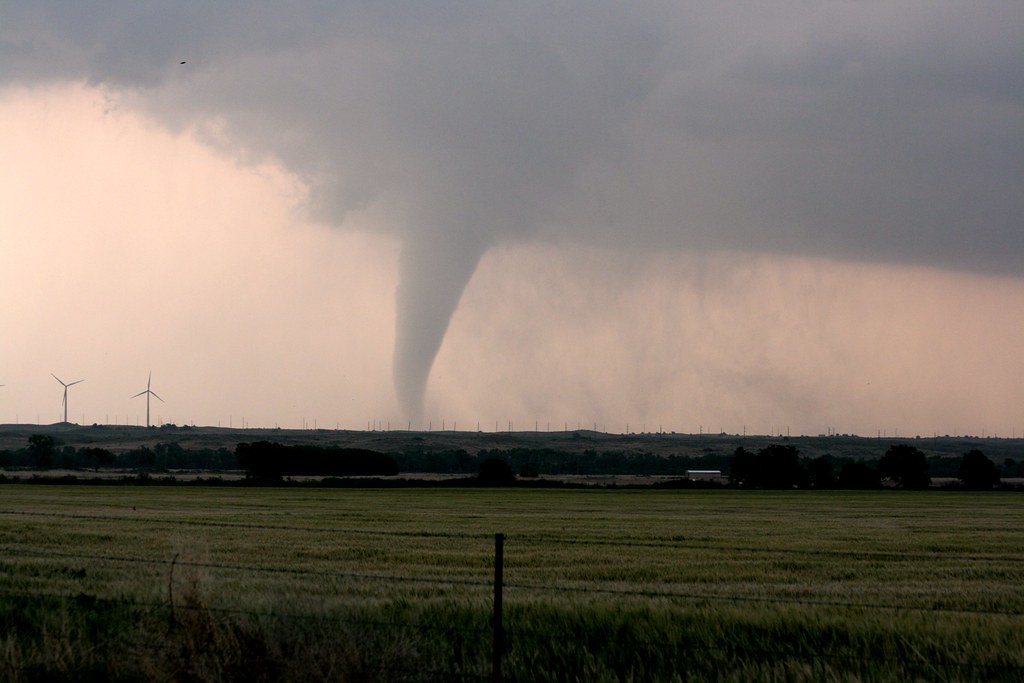
Factors influencing tornado frequency and intensity
Tornadoes can be influenced by a lot of things. These winds are created when hot, humid air from the gulf clashes with cool, dry air blowing down from Canada. This clash of air masses makes the atmosphere unstable and prone to funnel clouds. However, this isn’t the only combination at work. When high-speed winds blow in different directions or vary in speed at different altitudes, it increases the likelihood that these severe storm cells will form into dangerous twisters.
Beyond just wind patterns, we know that topography plays a huge role in how frequently tornadoes strike and just how bad they can get. When cold fronts pass over hills or mountains as they shift eastward, it gives them an additional “kick” of energy which causes more lightning to strike and the storms to become much stronger than they would have been otherwise. We also recognize that climate change is going to make these incidents more commonplace across many regions, not just Oklahoma’s infamous tornado alley.
In conclusion, there is no shortage of factors when it comes to explaining why some areas experience tornadoes more often than others -and why some are much worse . Understanding all these environmental impacts allows us to better manage risk zones and save lives when disaster does strike.
In recent years scientists have been studying just how changing temperatures and shifting weather patterns might cause an increase in tornado activity. There’s this idea that with hotter global temperatures comes more moisture in our atmosphere which translates into a whole lot more thunderstorms; thus increasing occurrences of twisters.
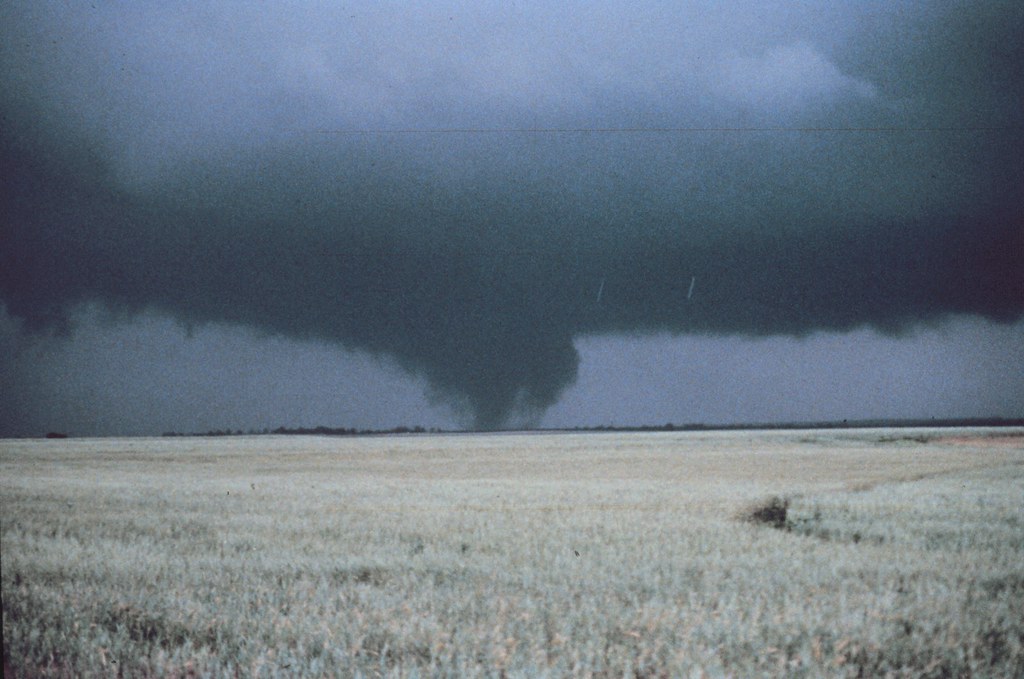
Tornadoes in Oklahoma: Unique Characteristics and Statistics
Tornadoes in Oklahoma are no laughing matter. This region, known as Tornado Alley, gets beat by them time and time again. The unique geography and climate patterns of Oklahoma make it a breeding ground for tornado formation. One of the biggest reasons there’s so many tornadoes in Oklahoma is because warm, wet air from the Gulf of Mexico clashes with dry, cold air from the Rocky Mountains.
This head-to-head creates conditions that are a perfect storm for severe weather; including tornadoes. In addition to this environmental knife fight, the flat terrain allows wind to flow across the state without any barriers – providing a needed boost to tornado development.
As far as statistics go, Oklahoma consistently ranks among states with the highest number of tornadoes each year. On average, more than 50 twisters pass through each year.
They range from EF0 on the weak scale all the way up to EF5 on the catastrophic scale. And here’s one fact you don’t want to be proud of: The Sooner State holds two records for the most powerful twister ever recorded – an F4/EF4 from Alanreed to Pampa on June 8 in 1995 and an F5/EF5 at Bridge Creek-Moore on May 3 in 1999.
Oklahoma is also notorious for its “tornado outbreaks,” where multiple twisters form within hours or minutes of each other. Outbreaks can cause widespread devastation and sometimes even take lives.
The most deadly outbreak happened May 31, 2013 when an EF5 struck El Reno killing eight people including four storm chasers. The most impactful outbreak happened May 3-4, 1999 when dozens of tornadoes hit central Oklahoma over a span of eight hours.
Predictably these events can cause widespread damage and death tolls which we cannot allow ourselves to become accustomed to. As the climate continues to change, our state is more prone than ever to experiencing even worse outbreaks.
During this time, residents of Oklahoma and neighboring states stay vigilant and prepared, closely monitoring weather forecasts and heeding any tornado warnings issued by the National Weather Service. With that said, it is important for individuals to understand the unique characteristics and statistics of tornadoes in Oklahoma so they can properly prepare themselves and their communities for them.
See also: What is a Waterspout Tornado?
How to Prepare for Tornadoes in Oklahoma
Creating a well thought out plan with communication options is crucial when it comes to preparing for a tornado. Designate a meeting place for your family members to meet at if you all get separated during the storm. Establish communication protocols as well so you’re able to check up on one another.
Practicing drills regularly will ensure everyone knows what their role is during an actual emergency. Moreover, invest in a weather radio or download a mobile app that will keep you updated on any signs of danger. It is also smart to create an emergency kit with water, non-perishable food items, flashlights, batteries, first aid kit supplies, and important documents in case you have to leave your home.
Additionally, knowing what to do if you are caught driving during a tornado is just as crucial as being prepared at home. Keep an eye on the weather forecast throughout the day and if there’s any indication of severe weather near where you’re going or coming from while driving in Oklahoma during the months of March through June then it may be best avoid hitting the road altogether. If you must drive then make sure to find low-lying areas away from overpasses or bridges where you can safely park your car and seek shelter immediately after exiting it.
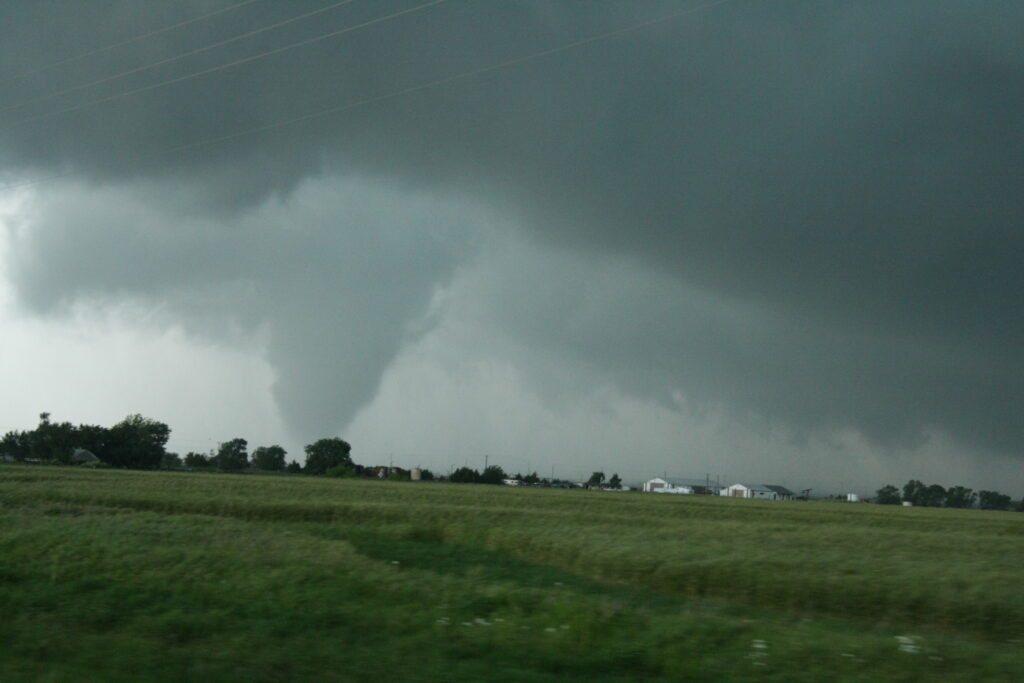
Create a tornado plan
One thing that many people often forget about when they think about natural disasters is its impact on their pets. Make sure your tornado plan includes provisions for them as well such as extra food or medication if they need any. Create copies of important documents like birth certificates or passports and store them somewhere safe, like a fireproof safe or a safety deposit box at a bank. Establishing a communication protocol with your neighbors or local community resources can be greatly beneficial as well. Collaborating with others in your area will allow you to share resources and support each other, especially useful in regions prone to tornadoes like Iowa.
Avoid manufactured (mobile) homes
Although they may be less expensive, manufactured homes are far from being safe during tornado season in Oklahoma. Since they have lightweight construction, it makes them much more susceptible to getting damaged by high winds. A study found that residents of manufactured homes are over 15 times more likely to be killed in a tornado than those living in sturdy houses.
When strong winds blow, mobile homes can get picked up and knocked over easily because they’re not as secure as houses. People can get seriously hurt or even die when this happens. There’s a much higher chance of something bad occurring with manufactured homes during tornado season, and it’s statistically proven. That’s why it’s important for people to consider other options if they live in Oklahoma or other places known for tornadoes.
Always Be Aware of the Weather
Make an emergency kit specifically for the many tornadoes that could hit Norman and Tulsa in Oklahoma County.
When preparing for scary weather events like tornadoes, an emergency kit is essential in order to survive. It needs to have non-perishable food, water, a flashlight, batteries, a battery-powered or hand-crank radio, first aid kits with plenty of supplies, and important documents inside of something waterproof.
People should also think about adding dust masks and sturdy shoes in case cleanup is needed after the storm passes through. It’s hard to tell what will be left standing in places like Tulsa or Norman.
Everyone has their own needs and wants to feel safe during scary situations. For example, kids might need comfort items while adults require prescription medications or pet supplies for animals they own. Obviously no one wants to go through the destruction caused by a tornado firsthand. However, being prepared with an organized emergency kit can help keep everyone safe if it does happen.
For places like Oklahoma where tornados regularly touch down on the ground and start spinning around, it is so important to always know what the weather is going to do next. Don’t just pay attention sometimes or when you feel like it; be informed all of the time so nothing sneaks up on you.
Families should know what their plan is ahead of time in case there ever comes a day when severe storms are expected in their area. Saves lives knowing what actions need taken right away before things escalate too quickly. It’ll also be very helpful to know the current conditions whenever you are out and about because nobody wants to get caught in a tornado while they’re walking their dog or driving.
Act Immediately to Tornado Warnings
If someone’s phone alerts them that there is a tornado warning, it’s important to act right away and not waste any time. Storms can turn violent fast and it might only give you a few seconds to react before everything turns into chaos. The first thing everyone should do is locate the closest safe space they can hide, and then get there as quick as they possibly can.
Not only should you pay attention to official instructions, but you should also take personal responsibility by constantly staying up to date with weather developments.
Having a weather radio or smartphone app connected to a weather station can keep you in the loop in real-time as well as provide alerts for possible tornado activity. Likewise, being prepared with an emergency kit that’s jam packed with essentials like water, non-perishable food, flashlights and first aid supplies will guarantee that you’re good to go when disaster strikes. In the end, understanding the gravity of tornado warnings and being swift in taking action can boost your chances of making it through Oklahoma’s tornado season alive.
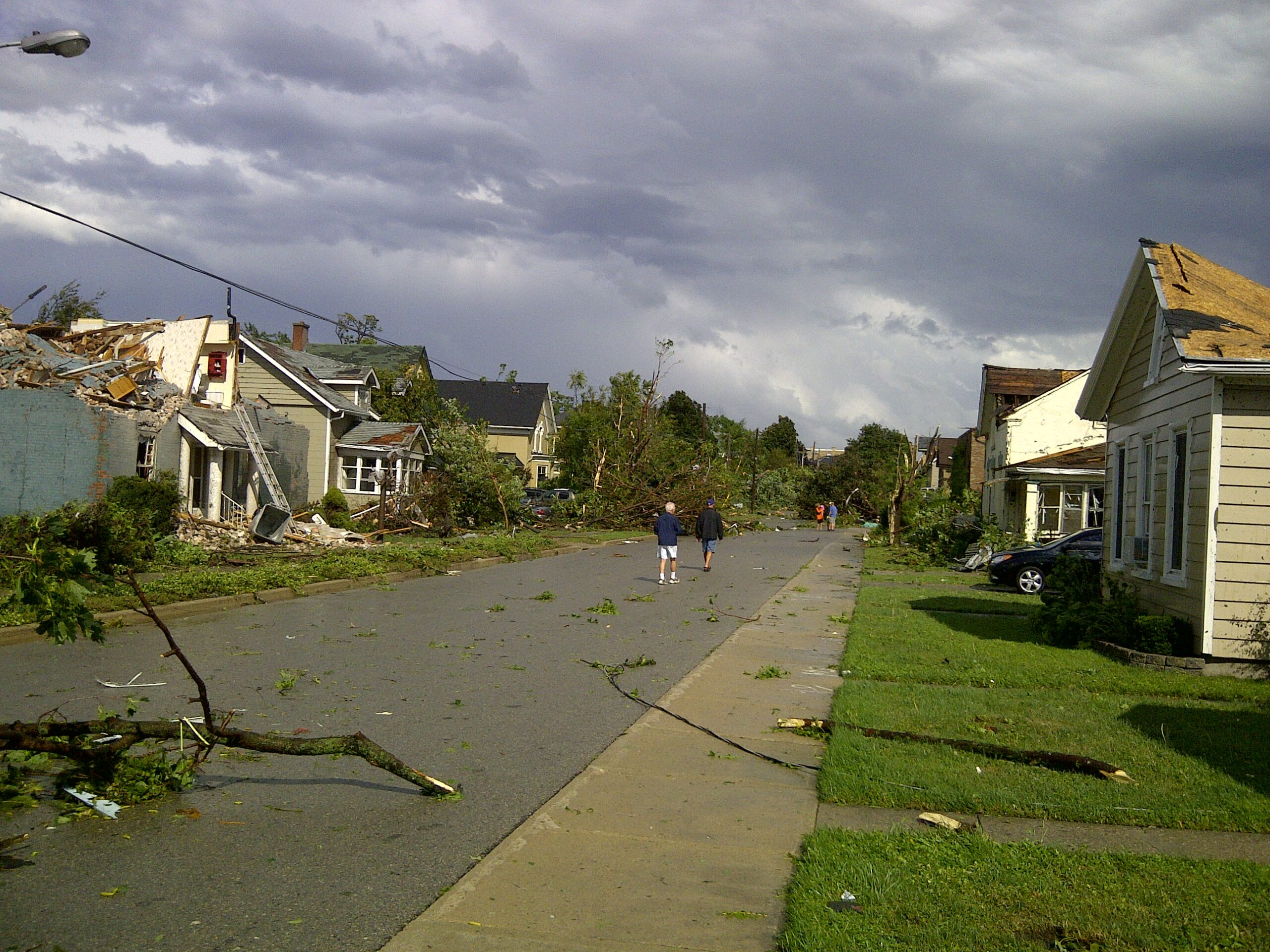
After a Tornado Do You Know What To Do?
Having some sort of plan is crucial after a twister, particularly if you live in cities like Norman or Tulsa. Understand where help services are located whether it’s shelter locations in Oklahoma County or emergency services and evacuation routes closer to home. Communication plans with family members are important too during such chaotic times.
Additionally, know what resources are available to you after a tornado such as food, water and medical supplies. By creating an emergency kit with these items included helps ensure that both you and your family remain safe from further harm post-disaster. Addressing these matters beforehand won’t make them any easier but it can make them more manageable.
Are You Prepared for Tornadoes in Oklahoma?
Living in Oklahoma means being prepared for tornadoes is just part of everyday life. Have a designated safe place whether it’s underground or simply an interior room without windows is necessary for all residents.
This can not be stressed enough: having an emergency pack ready with essentials like water, non-perishable food and first aid supplies is crucial too. Staying informed about weather updates through alerts and knowing when to take action at the shortest notice are also required.
As we approach the season where tornadoes love to wreak havoc on our homes — spring — we must familiarize ourselves with how they form in a place like Oklahoma. The state experiences a higher frequency of tornadoes than others because it’s located within Tornado Alley, where warm and moist air meets cool and dry air — creating the perfect conditions for severe storms.
Therefore, residents must be more cautious when springtime approaches to protect themselves and their families, especially if you reside in areas like Norman or Tulsa. Being proactive about the structural integrity of your home and having a concrete plan for emergency family communication is only the start to being ready in such an unstable environment.
Distribution of Tornadoes in the Immediate Oklahoma City, Oklahoma Area by Month, 1890-Present

The immediate Oklahoma City area has seen a lot of tornadoes over the past 130 years, highlighting the need for effective warning systems and preparedness. Between 1890 and today, the number of tornadoes varied by month. Some months were more active than others.
April, May, and June are usually the most active months for tornadoes in this area, according to the National Oceanic and Atmospheric Administration. This is when tornado season peaks in central United States.
During these three months, there is usually a combination of moist air from the Gulf of Mexico and dry air from the Rockies. These conditions are perfect for severe weather and creating tornadoes. But that doesn’t mean you won’t see any at other times! They can happen at random times throughout the year as well, indicating that tornadoes can occur beyond the traditional
It’s important to know when tornadoes are most likely to happen so people can be prepared and keep everyone safe.
Distribution of Tornadoes in the Immediate Oklahoma City, Oklahoma Area by CST Hour, 1890-Present

The distribution of tornadoes in this area by CST hour shows different trends throughout the day. Most occurrences happen later in the day between 3 PM and 7 PM as it gets closer to night time.
This trend seems to be caused when daytime heating combines with atmospheric instability and makes perfect conditions for tornados to form late afternoon/early evening hours. But there are exceptions too! There are also occasional overnight or early morning ones as well.
Overall though, data shows that being most cautious during late afternoon/evening hours would probably keep residents safest.
Tornado Frequency in the Immediate Oklahoma City, Oklahoma Area by Decade, 1890-Present

The frequency of how many tornados touch down has changed throughout every decade since they’ve been recorded starting from before 1900!
From the 1890s to now, some decades had way more twisters than others did. The 1950s and 2010s specifically had the most activity while the 1980s and 2000s had the least.
Overall, tornado frequency has gone down. But lately it’s still been going up just a little bit again. There are a lot of factors that can make these numbers change. Climate, urban development, and technology to detect tornadoes are all new from when they first started tracking them.
Knowing these patterns though helps residents better understand how to be prepared for future twisters.
Some interesting facts about tornadoes:
Oklahoma City’s metro area was struck by a devastating F5 twister on May 3, 1999 that killed 36 people, making it the deadliest tornado ever to strike the immediate OKC area. Additionally, it caused $1 billion in damage, making it the second most costly known tornado. This was the first — and as of September 2020 — only F5 recorded in the OKC area.
A destructive EF5 occurred on May 20, 2013 causing 24 deaths and $2 billion in damage. This was the first EF5 recorded in the OKC area (the Enhanced Fujita Scale rating system wasn’t adopted by NWS until after May 3, 1999) and ranks as the fourth deadliest/costliest tornado. Unlike for older outbreaks, detailed records are available for this one.
The second deadliest storm happened June 12, 1942 with a toll of at least 35 fatalities. The third deadliest is estimated to have claimed at least two fewer lives April 25, 1893.
The third costliest known tornado in OKC-metro history struck March 20, 1948 causing more than $10 million damage primarily to aircraft at Tinker Air Force Base. The events of May 20 and 3 both caused about a hundred times more damage than their respective counterparts on May 20, 1948. And those storms were plenty bad: The latter also is Oklahoma’s last known violent storm before Fall 2021; before then had been Sept. 11/12 (and especially noon-6 p.m.) of Labor Day weekend 1976.
In all other comparisons since at least June 21, 1917 (which followed many inflation-adjusted double-digit-Millions), there’s no contest: Other than Twenty-First Century daytime mounds affecting parts of Moore, Stratford and Dale (worse there) — which all uprooted and debarked multiple small to medium trees around the Norman Forecast Office while they were not rated above EF3! — the two most costly OKC-tornadoes of record wiped out every other known tornado in the metro area.
Overall, thirteen violent tornadoes — eleven F4/EF4s and two F5/EF5s — have hit within 35 miles, a testament to the tornado damage these areas can sustain. All but three of those calamities affected some part of Oklahoma County or its neighbors to the southeast (Norman) or north-northeast (Tulsa). The most recent was May 20, 2013.
The record for most tornadoes on a calendar day is five; that happened June 8, 1974. Also noteworthy are major historical outbreaks on May 31, 2013 (three) and Oct. 9, 2018.
Out of just six known November tornadoes in that time frame — two on Nov. 10, three on Nov. 19 and one on Nov. 20 — only one fatality occurred: from an uncovered mobile-home park near Midwest City’s eastern edge along with several other perils during a locally-historic event itself being eclipsed by a long-track nighttime supercell tracking across much of central Oklahoma.
Since at least June 21st century ago: The longest gap between known tornadic events in the immediate OKC area ran October 8, 1992-June 12, 1998: five years eight months! And then … nine days later came at least a dozen more twisters over about as many hours through May Fourth next year 🙂
The Oklahoma area has been struck 30 times by two or more tornadoes on the same day:
- April 25, 1893 (2)
- May 12, 1896 (2)
- June 21, 1942 (2)
- March 20, 1948 (2)
- April 30, 1949 (2)
- April 30, 1951 (2)
- June 3, 1956 (2)
- April 28, 1960 (3)
- May 21, 1961 (2)
- August 31, 1965 (3)
- September 19, 1965 (2)
- June 10, 1967 (2)
- April 30, 1970 (2)
- June 8, 1974 (5)
- April 30, 1978 (3)
- March 28, 1988 (2)
- June 13, 1998 (4)
- May 3, 1999 (4)
- October 22, 2000 (2)
- May 8, 2003 (2)
- May 9, 2003 (3)
- November 10, 2004 (2)
- May 7, 2008 (2)
- February 10, 2009 (2)
- May 10, 2010 (4)
- May 31, 2013 (5)
- April 26, 2016 (2)
- October 9, 2018 (5)
- May 25, 2019 (4)
- October 13, 2021 (3)
- February 26, 2023 (4)
Conclusion: The Swirling Season of Tornadoes in Oklahoma
Oh, the whirlwinds that are the tornadoes of Oklahoma. It’s enough to wrack anyone’s nerves, isn’t it? With weather that can get this severe and storms that can destroy whole towns, it pays to prepare and stay informed.
By learning the patterns and the idiosyncrasies of these natural disasters as they relate to this particular state, you can better navigate this season and safeguard yourself along with your loved ones.
So many strategies to consider when preparing for tornado season! A well-thought-out plan is absolutely crucial. Make sure you know where you’re headed in an emergency, have a room or basement designated as your safe space, and have emergency supplies at arm’s length.
Keeping tabs on local authorities’ latest forecasts will also keep you on top of things so you’ll know when to hunker down or make moves. On top of all this, educate yourself on tornadoes—how they come about in terms of meteorology, what telltale signs to look out for them—are present in the sky—and what exactly is going on when a watch turns into a warning.
Though it may be intimidating as all hell, do try your best to remain calm throughout this time. Think safety first always and consider implementing warning systems for immediate updates. Do everything within reason possible to take care of yourself (and others). You should be able to navigate through tornado season with confidence if you’ve done everything there is to do ahead of time so just remember not stress too much once those sirens start blaring.
Whether or not we like to admit it,,,Tornadoes are just part of life for Oklahomans and we’ve got no choice but to figure out how best live with them instead ignoring their presence until they strike…But hey! So long as we remain safe by taking necessary precautions before disaster strikes… who cares about anything else? Stay safe everyone…

